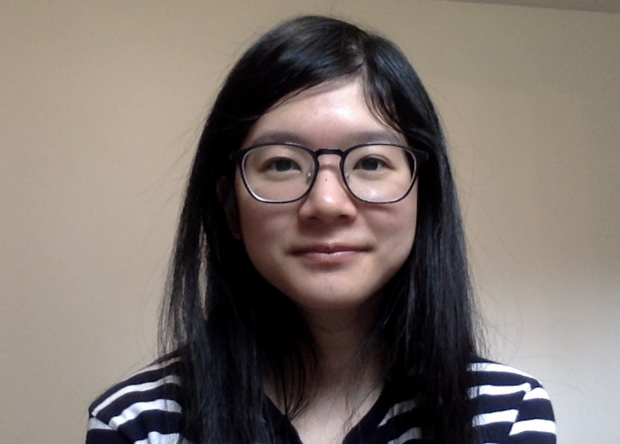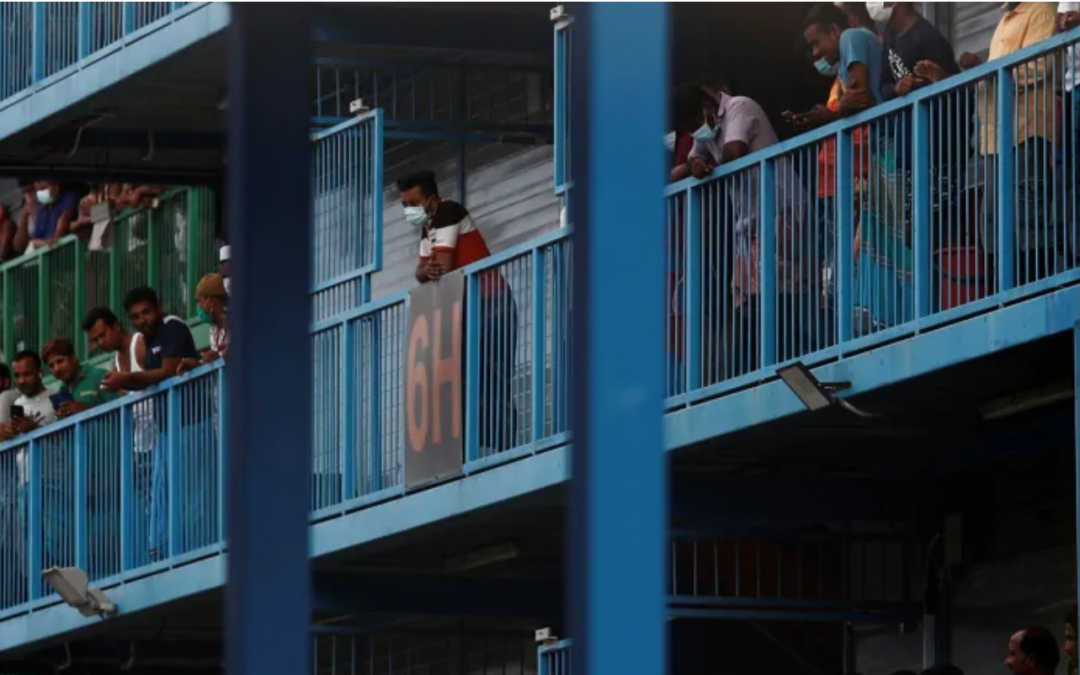(Lynn Ng Yu Ling)
 As mentioned in Part 1 of this essay, the Singapore government’s COVID-19 response has been shaped by entrenched inequalities between citizens and migrants. While there has been global acclaim for Singapore’s containment of the crisis, a closer look shows how different the story for immigrants in Singapore generally is.
As mentioned in Part 1 of this essay, the Singapore government’s COVID-19 response has been shaped by entrenched inequalities between citizens and migrants. While there has been global acclaim for Singapore’s containment of the crisis, a closer look shows how different the story for immigrants in Singapore generally is.
Epidemiological experts say that the surge rates seem emotionally shocking but are within the frame of expected projections, considering the incubation period of the virus. When the circuit breaker measures were announced, purpose-built worker dormitories were put under government-ordered quarantines as their residents battled increasing anxiety and frustration. Other medical personnel say that, strictly speaking, these surges are not ‘new cases’ but signs of more extensive testing in dormitories. We can expect this trend to continue for a while before the effectiveness of taskforce measures show.
This virus is going to keep living with us, plus it is unlikely that COVID-19 will be the last global crisis that comes our way. This weak link in Singapore’s COVID-19 response, as one discerning response to the Chinese forum letter said, shows that “The dilemma that our migrant workers are facing today is a result of structural class disempowerment that sprung from a global capitalist order”.
The intensity of economic pride at the heart of the Singaporean identity is to the extent of clouding our ability to make reasonable judgements of imported labor. Economic nationalism, as a contemporary offshoot of the colonial fait accompli of the model of laissez-faire liberalism bequeathed by British colonial masters, is seldom interrogated for its legal but unjust employment relationships with migrant workers. The treatment of migrant workers in Singapore goes way beyond housing to encompass a whole range of unfair practices from deceitful hiring agencies to exploitative contracts that deny migrants the status of a dignified laborer. COVID-19 has at least forced some attention to the bare essentials.
At this moment of writing, the Singapore government has demonstrated yet again its extraordinary reputation for organization and systematic implementation, insofar as the state wills this to be the case. Previously ‘unthinkable’ spaces in the heartlands of the city, such as Expo Halls, hotel rooms, cruise ships and public housing blocks are being opened up to facilitate safe social distancing for dormitory workers. Testing capacity has been ramped up to an impressive degree that overtakes many OECD averages. Taskforce officials distribute meals and daily necessities to each room as residents are constantly being rehoused in new locations. The highest priority goes to the largest scale and most overcrowded dormitories where the risks of transmission are the most acute. Already noticeable improvements in accommodation quarters have come about as the taskforce devotes its energy to cleaning up this ticking time bomb. Migrant worker organizations have advocated for better living conditions for at least a decade, but it has taken the shock of COVID-19 to force some transfer of state energy into caring for its transient labor force.
Till now, the ruling party has not come down hard on the issue of migrant worker welfare. Some local commentators have urged the state to enforce strict rule-and-penalty systems for all purpose-built dormitories, and to include them under public industries. Individual employers are responsible for adhering to safety standards, but for-profit private dormitory operators are likely to shove as many men in a room in a bid to cut costs. Are citizen taxpayers and businessmen willing to contribute more out of their incomes and profits so that the worker-to-room ratio can be decreased, and dormitory environments maintained with the same care that shopping malls receive? The answer will have to be “yes” if the images of some of their appalling conditions trouble us.
In the case of the Singapore taskforce, the issue is not one of lack of implementation capacity but lack of will. Among the non-dormitory populace, circuit breaker offenders have been fined while serious cases of breaching stay-home/quarantine orders may result in brief jail terms. We do not have the space to delve into the intricacies of an authoritarian democracy, nor to explore the comments of observers from liberal democracies. For the current issue at hand, the state’s political regime is proving, as always, an unparalleled degree of internal autonomy. What would happen if the state devoted as much regulatory capacity to dormitories? Perhaps this crisis is telling us that it is high time for that iron fist to clamp down on employer idiosyncrasies.
Social commentators have rightly pointed out that Singapore possesses the healthcare system and risk management capacity to handle exponential surges. But these latest measures for foreign worker dormitories have come too late and only during such extraordinary circumstances. Why were these measures, which have long been advocated by grassroots organizations, unfathomable during ‘normal’ times? Many fellow activists and friends have said that the worst thing society as a whole could do is to resume the previous order and pace of business-as-usual the moment COVID-19 starts to die down. If we wish to become a more ethical and socialist community, Singaporean nationals cannot discuss migrant worker welfare entitlements based on judgements of economic disposability, but must learn to recognise work permit holders as rightful claimants to life essentials. Housing is one of multiple tenets in a fair working relationship, so the slow journey towards more equitable migrant employment conditions cannot stop there. Can these ‘unthinkable’ adjustments persist post-pandemic into the longer term?
